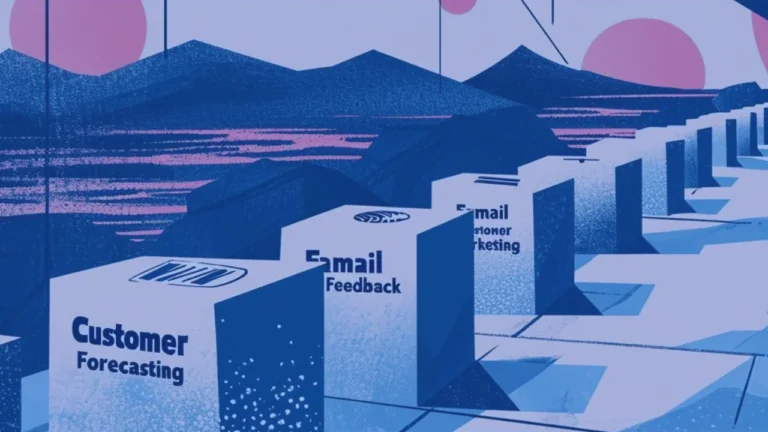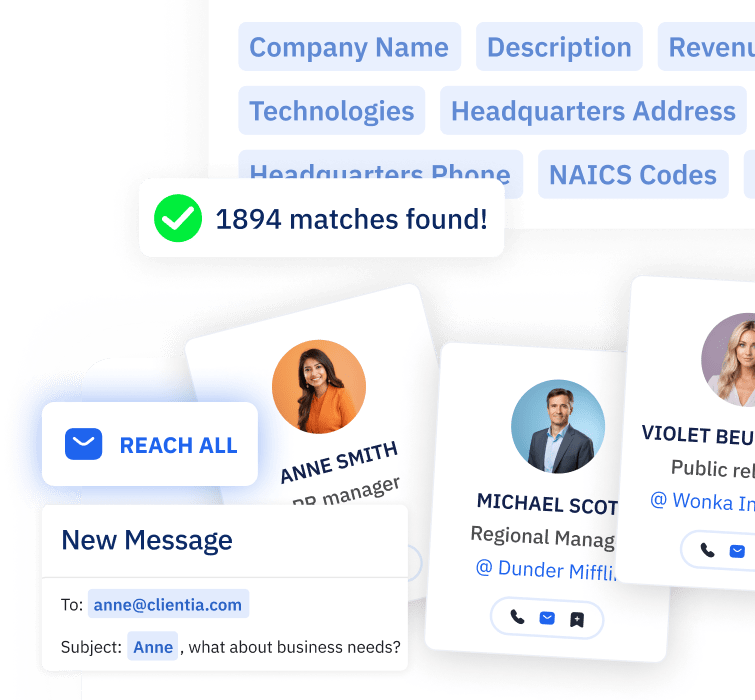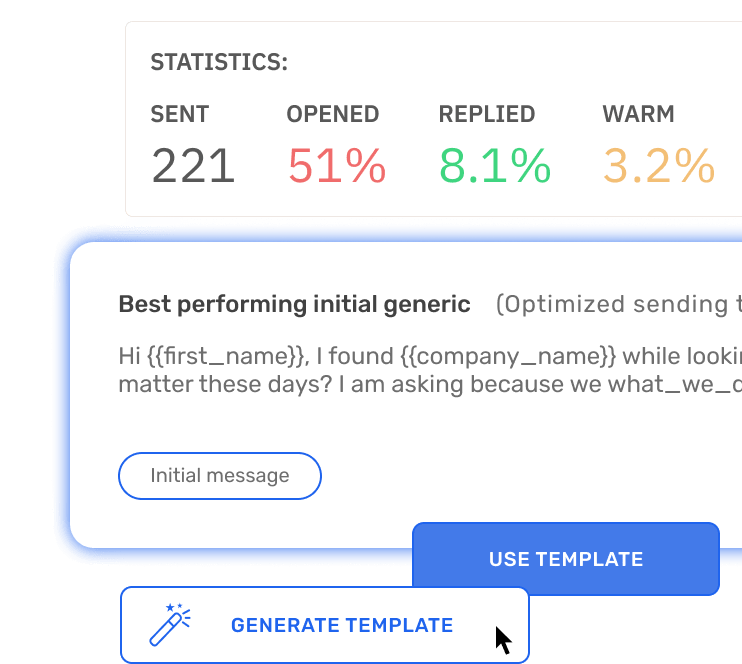In the fast-paced world of sales, staying ahead of the competition often means embracing the latest in technology. Sales automation represents not just a convenience but a necessity for businesses determined to streamline operations, maximize efficiency, and foster growth. It involves the strategic use of software tools to automate repetitive, time-consuming tasks traditionally performed by sales professionals.
This integration of automation allows sales teams to focus their efforts on what they do best — building relationships and closing deals. By reducing manual labor through automation, businesses can respond more swiftly to market changes, client needs, and leverage data-driven decisions for unparalleled success in the sales arena.
| Benefits of Embracing Sales Automation |
| Enhanced efficiency and productivity |
| Improved lead management |
| Higher conversion rates |
| Better customer relationship management |
| Accurate sales forecasting |
As we dive deeper into the world of automated sales, we will explore a variety of tools and strategies that can revolutionize how your business approaches each aspect of the sales process, setting the stage for a more dynamic, responsive, and ultimately profitable sales cycle.
Seek, pick, and reach
Connect with your potential customers
- 180m+ contacts
- Advanced filtering
- Multichannel sequences
- CRM integrations
TL;DR
- Sales automation is crucial for modern businesses to enhance efficiency, streamline operations, and facilitate growth by handling repetitive tasks and allowing sales teams to focus on building relationships and closing deals.
- Automating the prospecting and lead generation process can significantly improve the quality of leads and allow for a steadier stream of valuable potential clients, increasing the likelihood of conversion.
- Lead qualification automation employs AI-driven software to score and route leads effectively, prioritizing those with the highest potential for conversion.
- Scheduling automation tools solve logistical challenges of appointment setting, integrating with CRM platforms for comprehensive insight and reducing scheduling errors.
- Sales proposal creation is expedited with automation tools, offering customizable templates and content libraries, increasing efficiency and allowing sales teams to concentrate on strategy.
- Chatbots and AI assistants provide 24/7 customer interaction, automate lead qualification, and deliver personalized assistance, enhancing customer service and lead engagement without constant human oversight.
- Sales analytics and reporting automation equip sales teams with real-time data, predictive modeling, and in-depth reports for performance assessment and informed decision-making.
- E-signature integration in sales documents simplifies the contract process, ensures legal compliance, and tracks the status of documents to speed up the sales cycle.
- Automated sales training delivery systems facilitate continuous learning and improvement, offering personalized learning paths and on-demand resources.
- Sales forecasting tools use historical data and algorithmic approaches for strategic planning and to identify market trends, aiding in proactive strategy adjustment.
- Email correspondence automation saves time, personalizes messages, and optimizes scheduling, transforming cold leads into warmer prospects through segmentation and dynamic content personalization.
- Streamlining sales operations with automation tools eliminates bottlenecks and integrates with other systems for a unified approach, ensuring precision and reduced overhead.
- Sales call dialing automation improves contact efficiency with potential clients, while analysis of calls post-conversation provides valuable insights into client interactions.
- Automating client communication entails using CRM systems for personalized email sequences and social media engagement, bolstering long-term client loyalty.
- Client retention automation tools prevent churn by identifying at-risk clients and initiating re-engagement campaigns, alongside efficient ticketing systems and loyalty programs.
- Lead magnet promotion automation ensures immediate distribution and follow-up to guide leads down the sales funnel through targeted advertising and email sequences.
- Setting up automated sales outreach for follow-ups guarantees consistent engagement with prospects, personally tailoring communications based on lead history and analytics.
- Enhancing sales calls with automation allows for pre-call intelligence and post-call activities planning, integrating with broader sales strategies for more impactful interactions.
Automate Prospecting and Lead Generation
The foundation of any successful sales strategy lies in identifying and connecting with the right prospective clients. Traditional prospecting methods can be resource-intensive and yield mixed results. However, automating this crucial stage can produce a steady stream of high-quality leads with minimal manual intervention.
44% of sellers in the UK use sales tech weekly, and 25% use it daily for prospecting.
Source: hubspot.com
Using the right combination of lead generation tools and software solutions, businesses can scrape databases, monitor social media channels, and leverage predictive analytics to pinpoint potential prospects that fit their ideal customer profile. The automation of lead generation doesn’t just produce leads — it ensures that the leads are valuable, providing a greater likelihood of conversion.
| Key Tools for Prospecting and Lead Generation |
| Automated web scraping |
| Social media monitoring software |
| Email list building services |
| Predictive analytics platforms |
Sales automation not only captures leads but also initiates the first point of contact through automated email campaigns and outreach messages, thereby setting the stage for fruitful relationships with potential customers.
Lead Qualification Automation
Turning a potential lead into a paying customer is a nuanced process that begins with lead qualification. This pivotal step ensures that sales efforts are directed towards leads most likely to convert. Automating this step streamlines the sales funnel as AI-driven software analyzes lead data, scores them based on pre-set criteria, and routes them to the appropriate sales channel or representative.
30% of companies are using or considering using natural language processing (NLP) solutions for sales.
Source: hubspot.com
Such systems alleviate the pressure on sales teams by filtering out unqualified leads and prioritizing those with the highest conversion potential. Automated qualification tools can account for various factors including demographic information, online behavior, engagement levels, and purchase history to establish a lead’s propensity to buy.
| Advantages of Automated Lead Qualification |
| Consistent scoring and routing of leads |
| Enhanced targeting of sales efforts |
| Improved lead management efficiency |
| Faster response times to high-value leads |
With sales automation software, not only does a business ensure a standardized approach to lead qualification, but it also gains the agility to adapt that approach as market conditions evolve.
Appointment Scheduling Automation
The logistics of appointment setting, if handled manually, can become a labyrinthine process prone to errors and inefficiencies. Automated scheduling solutions have come to the forefront, offering a remedy to these logistical woes. These tools allow leads and customers to book meetings based on real-time availability, significantly reducing the likelihood of double-booking and no-shows.
42% of teams using a CRM automate meeting scheduling.
Source: hubspot.com
These systems send automated reminders to both sales reps and clients, keeping appointments on schedule and providing an opportunity for seamless follow-up. Integrating CRM platforms with scheduling software further refines the process by keeping all relevant client information in one place.
| Key Features of Scheduling Automation Tools |
| Real-time availability syncing |
| Automated reminder notifications |
| Self-service scheduling for clients |
| CRM integration for comprehensive insight |
As we adopt advanced solutions for appointment setting, such as integrating AI in sales interactions, the time saved translates directly into more opportunities for meaningful engagement with clients.
Automating Sales Proposals
Creating personalized sales proposals can be one of the most time-consuming tasks for any sales team. Customizing each document to meet the needs of a potential client requires significant effort and resources. Fortunately, automation in sales proposals is changing the landscape by enabling the efficient creation of personalized, professional-looking proposals within a fraction of the time it once took.
Proposal automation software comes equipped with templates that sales teams can quickly customize. It supports dynamic content adjustments based on the specific details of each lead or deal. Moreover, these tools often feature content libraries where commonly used images, text blocks, and pricing structures are stored for ease of access.
| Automation Tools for Sales Proposals |
| Templates and customizable content |
| Content libraries for easy document assembly |
| Automated pricing calculations |
| Integration with CRM and sales data |
Efficiency gains from automated proposals not only expedite the sales cycle but also allow sales representatives to focus on strategy and relationship-building. Additionally, e-signature integration streamlines the final acceptance process, making it easier and faster for clients to seal the deal.
Reach More with Less Effort
Connect with Potential Clients at scale
- AI message generator
- E-mail verification
- Multichannel sequences
- A/B testing
Implementing Chatbots and AI Assistants
In an age where immediate response is often expected, chatbots and AI assistants have become crucial in providing real-time engagement with website visitors and potential leads. They are programmed to answer frequently asked questions, gather lead information, guide users through the site, and can even qualify leads based on their interactions.
Moreover, AI-powered chatbots are continuously learning from each interaction, thus enhancing their ability to communicate and provide relevant information. This automated client interaction ensures a consistently high level of customer service and lead engagement without requiring constant human oversight.
| Capabilities of Chatbots and AI in Sales |
| 24/7 real-time customer interaction |
| Automated lead qualification and routing |
| Personalized recommendations and assistance |
| Integration with analytics for continuous learning |
AI for sales prospecting is not just a futuristic concept, but a current reality, driving efficiency and personalization in client interactions across online platforms.
Utilizing Sales Analytics and Reporting
Data drives modern sales strategies, and sales analytics and reporting have become indispensable for understanding performance and guiding decision-making. Automation has revolutionized this domain by providing real-time analytics dashboards, predictive modeling, and comprehensive reporting capabilities with minimal manual input.
Sales teams can now track key performance indicators (KPIs) effortlessly, analyze sales trends, and identify areas requiring attention or adjustment. These insights empower teams to optimize strategies, forecast outcomes, and ultimately, drive revenue growth through informed decision-making.
| Benefits of Automated Sales Analytics |
| Real-time data access and visualization |
| Predictive modeling for better forecasting |
| In-depth reports for strategy refinement |
| Tracking of sales KPIs for performance assessment |
The integration of analytics into the sales process is further enhanced by custom report generation, which allows for tailored insights suited to the unique needs of each business.
E-signature Integration for Sales Documents
The final stages of a sales process often involve documentation and contracts, which can be a bottleneck if managed traditionally. The advent of e-signature technology has streamlined this process, offering a significant advance in the efficiency and legality of document signing. E-signature integration with sales platforms ensures a seamless transition from verbal agreement to formalized contract.
This hassle-free process improves client experience by allowing them to sign documents electronically from anywhere, at any time. It also helps keep track of document status, providing sales teams with updates on pending signatures or completed agreements.
| E-signature Integration Advantages |
| Legal and secure document signing |
| Convenience and accessibility for clients |
| Real-time tracking of document status |
| Integration with sales CRM for data continuity |
The adoption of e-signature solutions within sales automation frameworks significantly reduces turnaround time, thereby accelerating the sales process from initial lead contact to the finalization of a deal.
Automated Sales Training Delivery
The efficiency and effectiveness of a sales team are closely tied to their level of training and up-to-date knowledge. Automated sales training delivery systems have emerged as critical facilitators of continuous learning and improvement. These platforms offer personalized learning paths, track progress, and provide on-demand access to a wealth of educational resources.
Sales representatives can benefit from a variety of formats such as videos, interactive modules, and quizzes—all of which can be accessed remotely, allowing for a flexible learning schedule that fits into their workflow.
| Advantages of Automated Training Systems |
| On-demand access to training resources |
| Personalized learning paths for targeted education |
| Progress tracking and performance analytics |
| Integration with HR and sales performance data |
The automated delivery of sales training ensures that all team members are equipped with the latest sales techniques, product knowledge, and best practices necessary to drive sales success.
Sales Forecasting Tools
Among the most significant advantages of sales automation is the ability to predict future sales and market trends. Sales forecasting tools utilize historical data, current sales pipeline status, and various algorithmic approaches to project sales outcomes. This predictive power is instrumental in strategic planning, resource allocation, and setting realistic targets.
These tools help in identifying patterns, seasonal trends, and potential challenges that could influence sales performance, enabling businesses to proactively adjust their strategies for optimal results.
| Capabilities of Sales Forecasting Tools |
| Predictive modeling for accurate forecasting |
| Identification of sales trends and patterns |
| Insight into pipeline health and potential deals |
| Data-driven strategy adjustment |
Employing these forecasting tools in tandem with sales automation practices helps create a robust, forward-looking sales operation that’s well-prepared for future market dynamics.
Automating Email Correspondence
Email remains one of the most effective channels for communicating with leads and customers, but managing it can be a daunting task. Automating email correspondence not only saves time but also ensures a consistent and personalized experience for each recipient. Email automation platforms can segment lists, personalize messages based on user behavior, and schedule emails to be sent at optimal times.
Templates and workflows can be created once and then modified as needed for different campaigns, ensuring a coherent brand message while still allowing for a level of personalization that feels genuine to the recipient.
| Key Features of Email Automation Software |
| List segmentation for targeted communication |
| Dynamic content personalization |
| Scheduling for timely message delivery |
| Analytics for campaign performance tracking |
Moreover, by incorporating cold email personalization at scale, companies can achieve a significant increase in email open rates and engagement, turning cold leads into warm prospects.
Streamlining Sales Operations
The agility of a sales team relies on its ability to navigate and manage a multitude of tasks without stumbling over administrative hurdles. Automating sales operations eliminates many of the bottlenecks that can slow down the sales process. From managing contact databases and processing orders to handling commissions and invoicing, automation tools help streamline these operations, enabling sales teams to operate with greater precision and less overhead.
71% of sales representatives express spending excessive time on data entry.
Source: leadsquared.com
Sales operation automation tools integrate with other systems, such as CRM and customer service platforms, leading to a unified approach that covers all aspects of the sales cycle.
| Streamlining Tools for Sales Operations |
| Automated order processing and invoicing |
| Commission calculation and reporting tools |
| CRM integration for centralized data management |
| Unified communication platforms |
By leveraging these tools, organizations can ensure that every part of the sales cycle is optimized for efficiency and effectiveness, from the initial prospecting to the final handshake.
leave no lead unexplored
Every potential client within reach
- 180m+ contacts
- CRM integrations
- 23 Prospect filters
- 15 Company filters
Automate Sales Call Dialing and Analysis
The sales call—an often underestimated touchpoint—holds immense potential when leveraged through automation. Automating sales call dialing not only streamlines the process of connecting with potential clients but also ensures no lead is left untouched due to human error or oversight. Automated dialers can be programmed with call schedules and are often coupled with CRM platforms to provide sales reps with essential client information at the moment of contact.
The analysis component comes into play post-call. Sophisticated automation tools can record calls, transcribe them, and even analyze conversations for keywords and sentiment, providing valuable insights into client interactions that can inform future communications.
| Sales Call Automation Advantages |
| Automated dialing schedules for optimal contact times |
| CRM integration for context-rich calls |
| Call recording and transcription for quality assurance |
| Conversation analysis for continuous improvement |
By employing sales call automation, companies can fine-tune their calling strategies, refine messaging, and better understand client needs and pain points.
Automating Client Communication
Successful sales don’t end with the closing of a deal; they must be nurtured through continued communication that fosters long-term loyalty. Automating client communication is not about removing the personal touch; rather, it’s about ensuring consistency and relevance at scale. By using CRM systems, businesses can automate personalized email sequences, schedule regular check-ins, and send out updates or newsletters that keep the company top-of-mind.
These communications can be triggered based on client actions or milestones, which helps maintain a sense of attentiveness and care from the business. Advanced systems can also integrate with social media platforms to automate certain types of engagement, ensuring a comprehensive communication strategy.
| Client Communication Automation Tools |
| Email automation for regular correspondence |
| Trigger-based messaging for timely engagement |
| Social media automation for broader reach |
| Analytics to monitor communication effectiveness |
Incorporating these communication tools into a company’s sales strategy helps to build a continuous and engaging dialogue with clients, enhancing their lifetime value.
Automating Client Retention
Retaining a client can be significantly more cost-effective than acquiring a new one, making client retention a pivotal aspect of sales strategy. Automating this process involves personalized communication, prompt customer service, regular feedback requests, and loyalty programs managed through automated systems.
By analyzing customer data, retention tools can identify clients at risk of churn and trigger targeted campaigns to re-engage them. Automation can also ensure timely responses to customer service inquiries, an element critical to client satisfaction.
| Automation Approaches to Client Retention |
| Predictive analytics to identify churn risks |
| Automated re-engagement campaigns |
| Efficient customer service ticketing systems |
| Loyalty programs and automated rewards delivery |
Integrating client retention strategies with comprehensive data analysis solidifies the sales cycle as a continuous loop of engagement, satisfaction, and loyalty.
Lead Magnet Promotion Automation
Lead magnets are vital tools in attracting potential clients’ attention and gathering their contact information for future sales efforts. To maximize their effectiveness, lead magnet promotion must be automated. This involves leveraging various online platforms to automatically serve lead magnet offers to users based on behavior, demographics, or through predetermined marketing funnels.
Moreover, automation can also handle the distribution of the lead magnets themselves. Once a user has expressed interest, an automated system can ensure instantaneous delivery of the digital product, whether it’s an e-book, white paper, or discount code, along with follow-up communications to guide the lead down the sales funnel.
| Automating Lead Magnet Distribution |
| Targeted online advertising |
| Automated email delivery of lead magnets |
| Follow-up sequences to nurture leads |
| Integration with analytics for optimization |
Effective call-to-action in these automated promotions further enhances the ability to convert interested prospects into actionable leads, feeding them into the automated sales pipeline.
Setting Up Follow-up Sales Outreach Automation
The follow-up is a critical stage in any sales process, marking the difference between a potential and a realized opportunity. Automating this process ensures that no lead is left behind due to forgetfulness or oversight. Through CRM and email automation platforms, businesses can schedule a series of follow-up communications that keep prospects engaged and drive them toward the next step in the sales cycle.
80% of sales are concluded after at least five follow-up meetings after the initial meeting.
Source: leadsquared.com
These automated sequences are tailored based on the lead’s previous interactions, ensuring relevancy and maintaining a naturally progressing dialogue.
| Follow-up Automation Benefits |
| Ensures consistent engagement with prospects |
| Personalized communication based on lead history |
| Timely reminders for sales reps about follow-up actions |
| Analytics to refine follow-up strategies |
By setting up an automated follow-up sequence, a company can substantially increase the chances of converting leads into customers through persistent and thoughtful engagement.
no prior experience & time required
Find your winning outbound formula with Concierge
- 95% activities on our behalf
- Avoid in-house SDR hire
- Learn & Take over anytime
- Numerous A/B tests
Efficient Sales Calls through Automation
The role of the sales call in the digital age has evolved, but its importance remains paramount. Sales calls can now be enhanced with automation for more efficient and effective results. Utilizing automated tools, sales reps can access pre-call intelligence, such as a lead’s previous interactions with the company and potential pain points, equipping them with the information needed to make the call more personable and targeted.
Post-call, automation steps in to log call details into the CRM system, transcribe contents for analysis, and schedule follow-up tasks. This ensures that insights gained during the call are not lost and that the sales process moves forward seamlessly.
| Automation for More Effective Sales Calls |
| Pre-call intelligence and insights |
| Post-call logging and activity scheduling |
| Call transcription and keyword analysis |
| Integration with sales strategy and reporting |
Through automated call systems, sales teams can optimize the time spent on calls, focusing on high-value interactions and driving more deals to closure with increased precision.
Conclusion
The march of technology through the realm of sales has not been a quiet one; it has heralded a revolution that has transformed how businesses approach the act of selling. Sales automation isn’t just a set of tools; it is a comprehensive strategy that smart companies leverage to not just meet their targets but to exceed them consistently. It covers every corner of the sales process, from lead generation to closing deals, and extends even further into nurturing long-term customer relationships.
The various tools and systems we’ve explored represent a cohesive and interconnected framework that aligns with a company’s unique objectives and scales alongside its growth. This technology allows businesses to not only keep pace with their competitors but to set the bar higher, offering exceptional, efficient, and effective sales services that today’s customers expect.
| Summary of Sales Automation Benefits |
| Streamlined sales processes |
| Enhanced efficiency and productivity |
| Greater scalability and growth potential |
| Data-driven insights and decision-making |
Sales automation fortifies a company with the agility to adapt to changing markets, the insight to connect with customers on a deeper level, and the time to focus on strategy and innovation. It is no longer an option in modern business—it is a cornerstone for those aiming for lasting success and impact.
In this new era of sales, companies that embrace these tools will thrive, and those that don’t will undoubtedly be left behind. Embrace automation, and watch your sales strategy transform from a function to a fortress, from a method to a masterpiece.
Thank you for following along with our comprehensive exploration of automating sales processes. May your sales strategies be ever agile, and your business abundance knows no bounds.
FAQ
What is sales automation?
Sales automation is the use of digital tools and software to automate repetitive tasks in the sales process, such as email correspondence, lead generation, customer data management, proposal creation, and more, allowing sales professionals to focus on building relationships and closing deals.
How does sales automation benefit a business?
Sales automation offers numerous benefits including increased efficiency, higher conversion rates, better customer relationship management, more accurate sales forecasting, and a scalable sales process that grows with the business.
Can small businesses benefit from sales automation?
Absolutely. Sales automation tools come in various scales and can be custom-fit to any business size, offering smaller businesses the same efficiency and data-driven insights enjoyed by larger corporations.
How does automation impact customer relationships?
Automation enhances customer relationships by providing consistent and personalized communication at scale. It ensures every customer interaction is informed, timely, and relevant.
What are the best sales automation tools?
The “best” tools will depend on your business needs, but commonly used sales automation tools include CRM platforms, email automation software, lead generation systems, and sales analytics and forecasting tools.
How do you implement sales automation in your business?
To implement sales automation, start by identifying the repetitive tasks in your sales process that can be automated, then select tools that integrate well with your current systems and operations. It’s crucial to provide training for your team to ensure they can fully leverage the new automation tools.
Is sales automation expensive?
The cost of sales automation can vary greatly depending on the tools and extent of automation you implement. Many providers offer scalable solutions that grow with your company, with some essential tools available at little to no cost.
What is a lead magnet and how is it automated?
A lead magnet is an incentive, like a free eBook or webinar, offered in exchange for a prospect’s contact information. Its promotion can be automated through targeted online advertising and follow-up email sequences that are triggered upon a prospect’s sign-up.
How does sales automation affect sales forecasting?
Sales automation provides more accurate and timely data, which in turn allows for better sales forecasting. Predictive analytics tools can analyze trends and performance to give you a clearer picture of future sales outcomes.
Can sales automation personalize customer interactions?
Yes, sales automation can personalize customer interactions by using customer data to tailor communications and offers to each prospect’s interests, behaviors, and needs, leading to higher engagement and satisfaction rates.































